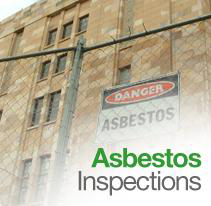|
Asbestos refers to any naturally occurring hydrated mineral silicate separable into commercially usable fibers, including chrysotile, amosite, crocidolite, tremolite, anthophyllite, and actinolite. Asbestos is a rock. Unlike a typical rock, when one takes a hammer to an asbestos rock, instead of forming pebbles, very small fibers are produced. These fibers can enter the body, typically through inhalation, and cause asbestos related diseases. Asbestos is known to have been used in over 3,000 products including Fireproofing, Acoustical Plaster; Finish Plasters; Joint Compounds, drywall systems, Boiler, Breeching, Duct, or Tank Insulations, Cement or Mortar Used for Boilers, Refractory Brick, Piping and Fitting Insulations, Roofing and Siding Insulation Boards, Vapor Barriers, Coatings, Non-Metallic or Non-Wood Roof Decking, Felts, Flashing, Shingles Galbestos. Floor Tile; Cove Base, Ceiling Tile; Vermiculite Insulation, Gaskets, Seals, Sealants, Vibration Isolators, Laboratory Tables and Hoods, Chalkboards; Pipe Penetration Packing or Other Firestopping Materials, Cementitious Pipe (Transite) Cementitious Board (Transite): Electrical Wire Insulation, Fire Curtains, Fire Blankets, Fire Doors, Brakes and Clutches, Mastic,. Adhesives and Glues, Caulks, Sheet Flooring (Linoleum), Grout, Window Caulks and Glazing Compounds; Terrazzo: and Boiler Rope.
Asbestos Containing Materials (ACM) have been, and continue to be used, in the construction of many buildings in the United States. Contrary to popular public belief, the use of all ACM products in the United States has NOT been banned. There also does not exist a program for the screening of products imported into the country that may contain asbestos. One can still purchase and apply products that contain asbestos.
An asbestos inspection, including the sampling and analysis of suspect ACM, is the only way to positively identify all ACM's, and to prove materials to be Non-ACM.
There are many reasons that building owners have inspections for ACM performed in their buildings. The New York State Department Of Labor, the United States Environmental Protection Agency, the New York City Department Of Environmental Protection and many local townships require an inspection for the identification of all ACM's prior to the renovation or demolition of most buildings. The filing process with the New York City Building's Department, and other local townships often require an "affidavit of absence of asbestos" prior to renovations or demolitions. All school buildings K-12 in the United States must be inspected for the presence of ACM's. OSHA has construction and general industry standards for asbestos, which include right to know laws and labeling requirements.
Building inspections for ACM's is a complicated process. It is a task where there is absolutely no substitute for experience. All of Testing Mechanics Corporation inspectors have a minimum of 10 years experience in the inspection of buildings for ACM. Some of the inspectors boast over 25 years plus experience, and have been licensed as Certified Asbestos Inspectors by the New York State Department Of Labor since the inception of the certification program.
All building inspections performed by Testing Mechanics are done so in accordance with the guidelines set forth in the USEPA 40 CFR Part 763 - Asbestos Containing Materials In Schools Final Rule And Notice, Federal Register Volume 52, No. 210 Washington, D.C. (10/30/87). This document is commonly referred to as the “A.H.E.R.A (Asbestos Hazard Emergency Response Act) guidelines”. The A.H.E.R.A. guidelines mandated asbestos inspections in schools K - 12, and often is used as an inspection guideline for other building inspection laws, such as the New York State Department Of Labor and the New York City Department Of Environmental Protection.
|
Our inspection reports are detailed and user friendly, for both the building owner and any outside contractors. Our inspection services typically contain:
- Building inspection of all affected areas
- Documentation of location and condition of ACM's
- Sampling of suspected ACM's
- Analysis for ACM's using Polarized Light Microscopy (PLM) utilizing a laboratory which meets accreditation by federal, state and local requirements
- If required, Analysis for ACM's using Transmission Electron Microscopy (TEM) utilizing a laboratory which meets accreditation by federal, state and local requirements
- Preparation of Inspection Report
- If requested, Preparation of an "Affidavit of Absence of Asbestos" form if no ACM is identified
|
 |
|